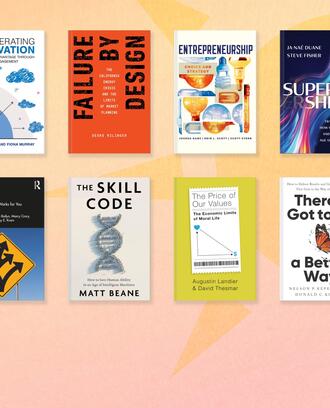Credit: Jennifer Tapias Derch
New study quantifies the impact of face-to-face interactions on innovation
By
As Americans continue to work from home in the wake of the pandemic, executives are trying to figure out the ramifications of the new normal. Does working in an office help boost innovation and creativity?
New research from MIT says yes. David Atkin, an MIT professor of economics, quantified the impact of face-to-face meetings in the paper "The Returns to Face-to-Face Interactions: Knowledge Spillovers in Silicon Valley,” co-authored by M. Keith Chen and Anton Popov.
While many companies, including Facebook, Twitter and Slack, have generous policies that allow employees to work from home, “a major concern with such developments is the decline in knowledge flows that might result from fewer face-to-face interactions,” the authors write in their research. Some companies like Goldman Sachs are now requiring employees to come back to the office five days a week.
In particular, the researchers were interested in quantifying the impacts of face-to-face meetings on the flow of knowledge between firms.
These meetings may be planned, or serendipitous, such as meeting an acquaintance by chance. This could include, for example, a worker waiting in line at a coffee shop, who may bump into a classmate from college or a former colleague who now works elsewhere. That could create meeting that “may spark a conversation that leads to a transfer of knowledge or a collaboration,” the authors write.
Mapping interactions
To find out the impact of losing such face-to-face interactions, the authors used newly available geolocation data from smartphones and combined it with maps of building rooftops of firms in Silicon Valley that apply for patents.
The authors chose Silicon Valley as the basis for their research, given its leadership in innovation. Prior research has shown that regular interactions between workers at different organizations in innovation ecosystems like Silicon Valley lead to innovative breakthroughs.
Related Articles
And some 20% of U.S. patent applications with U.S.-based inventors filed during the period covered by their patent sample (January 2007 to March 2019) had at least one Silicon Valley-based inventor — despite the region containing less than 3% of the U.S. population.
The researchers assigned workers to establishments based on where they spent a large fraction of their waking hours. Then they constructed a digital trail of face-to-face interactions between workers of different establishments using geolocation pings from approximately 50 million handsets collected by the firm Safegraph between September 2016 and November 2017. (The authors chose this time period to have full visibility on patent applications that were made well before COVID-19 changed workers’ in-office routines.)
Finding that two smartphones were located close to each other at the same time was used to measure the likelihood that a worker of one establishment met a worker of another establishment.
Face-to-face meetings significantly increased patent citations
Working under the assumption that patent citations are “an observable proxy for knowledge flows,” the researchers then correlated those worker interactions with patent citations between the two workers’ employers. They relied on the patent citation dataset from the U.S. Patent and Trademark Office databases of patent applications and granted patents.
Implementing this approach, the authors found that face-to-face meetings significantly increased patent citations between establishments.
The findings have important ramifications on remote work. “Our estimates shed light on the potential impact on knowledge flows if Silicon Valley firms allowed remote work on a permanent basis, a trend that has been greatly accelerated by the pandemic,” they write in their research. The authors were able to predict that:
- Eliminating a quarter of face-to-face meetings in Silicon Valley would reduce the number of patent citations by approximately 8%.
- If 25% of office workers in the sample worked from home instead of at the office, face-to-face meetings would fall by 17% and patent citations by 5.2%.
- If half the office workers in the sample worked from home, meetings would fall by 35.1% and citations by 11.8%.
Going forward, the authors said that the efforts employers and workers make to create serendipitous moments can have a real impact.
“If workers take advantage of the greater flexibility to move to further away locations that are cheaper or more scenic, face-to-face meetings would likely fall further,” the authors write. But “if permanent work-from-homers make conscious efforts to meet more people, meetings would fall less.”



